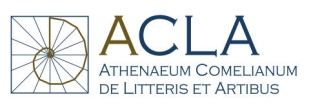In the short film Walking the Western Range, Linda Karshan creates one of her walked drawings in the monumental galleries of the British Museum, passing through the exhibitions of Assyrian, Egyptian, and Greek sculpture. A companion piece to the film is poet Karthika Naïr’s Wanderer of The Western Range: wRiting Time II, which interprets Linda’s walking figure as a personification of Time. The film was presented at NYU’s Remarque Institute in January 2025.
The Walked Drawings came to being as a natural extension of Linda’s drawings on paper, which are free-hand geometric works of extraordinary precision created through a choreographic full-body process of balance and rhythmic motion. The graphite lines on the page as representation of the artist’s movements became the lines traced by the artist’s body itself, using space as a canvas. In that way, the Walked Drawings become an exploration of human presence, and presence is often signified by sound.
The way Linda’s shoes are hooked up to a microphone in the Western Range means that her footsteps are always in the aural foreground: even when her body moves further away from the viewer, her sound remains next to the listener. The effect created is almost one of a body-soul duality, or a poetic trickster’s game of “things are not quite what they seem.”
Linda’s walk through the galleries is matter-of-fact, deliberate and restrained. She does not stop to admire the great works of art that surround her, she does not even appear to look at them: her gaze is fixed in front of her, towards the unfolding future. The sound of her shoes on the floor recalls a pen scratching over good thick paper – the sound of history being chronicled by a human scribe.
This presentation was part of a series aimed at exploring the reception of the “Classical” past in our modern era. It has been a contentious issue in academia: whose stories do we tell, what counts as a “classic”, how do we deal with the wrongs that interpretations of the ancient past have been used to justify?
Naïr’s poem comments sharply: We are the good migrants, the statues insist, We belong to Time, not place. Sandstone, granite, plaster, alabaster, marble, diorite: our colours do not contaminate.
At times, the walking figure’s detachment from the monumental art surrounding her seems to make its own quiet statement on the matter: she does not stop in reverence to behold a marble ruler or a sculpted god, she does not honor the work of one civilization over another, she is simply Time marching on. Her nature is self-contained and self-sufficient, she is indifferent to the vanity of the labors of men, she is the sister of unknowable Fate.
And yet, there’s still that immediate, earthly, tactile presence of the sound of her shoes on the floor, right in the foreground of our hearing, bringing the whole matter back down to the ground. She is Time, yes – but Time is a person, sharing physical space in the present with pieces still present of the past, all in softly squeaking familiar shoes.
Linda’s presence in the Walked Drawings is a meditation on the human measure by which Time is defined – recalling the astronomer Carl Sagan’s description of the human race as “a way for the Cosmos to know itself.” As Time walks her way through the art of the Western Range, we remember that the makers of these monuments and those who lived in their shadows walked with the same footfalls on the same ground, their bodies were of the same measure and rhythm. Time, in her human measure, reminds us that the chronicles of History and the Classics may appear to us as carved from stone, but in truth they are warm flesh and bone, and the unfolding idea of the past has passed through minds much like our own.
The walk comes to an elegant end: Linda pauses between two carved Greek youths, kouroi, whose quiet smiles are recognized as among the earliest examples of the depiction of interiority in art: a sign of a mind at home. She stands between them, her measure matching theirs, turns to the camera, and Time looks out to meet us.
Mara Gerety, 2025

